Ford 351 Windsor Engine Guide

Meet Austin
Austin has been a muscle car enthusiast since an early age with his Dad having a collection including a 1965 Mustang, 1968 Mercury Cougar, and a 1969 Mustang Mach 1 among many others. Austin received a technical writing degree from University of Colorado Denver with the intentions of becoming an automotive journalist. His automotive knowledge, enthusiasm, and hands on experience allow him to craft detailed, accurate, and high-quality articles for the passionate Muscle Car Club audience.
The Ford 351 Windsor is the largest displacement engine in the Ford Windsor engine series. It was introduced in 1969 to fill the gap between the 302 and 390 V8 engines. Ford’s ultimate goal was to create an engine that was versatile and usable in a number of applications, which is exactly what the 351W excelled in for nearly 30 years over its production run.
In this guide, we’ll cover the Ford 351 Windsor in-depth, going into specs, engine design, changes over the years, common problems, and popular performance upgrades.
Ford 351W Engine History
The Ford 351 Windsor was introduced to the Windsor small-block engine series in 1969 and was produced all the way until 1996. While the 351W is similar to other engines in the Windsor engine series in terms of its overall construction, it does stray from the 289 and 302 in a few important ways. I’ll go further into the specifics in the next section. Ford felt that the Windsor lineup needed a more versatile and larger displacement engine that could not only power midsize sports coupes, but also full-size sedans and even trucks, vans, and SUVs.
Since versatility was the primary goal for the 351W, Ford sacrificed all-out performance for more usable attributes, like ludicrous amounts of torque to get heavy vehicles going under their own weight. While versatility was the name of the game for the 351W, it did become a high-performance option for some vehicles, like the Mustang. When the 351 was released in 1969, it replaced the 302 4-barrel as the performance engine in the Mustang and the 302 4-barrel was subsequently dropped from the lineup.
The 351W is one of three engines that Ford released with 351 cubic inches of displacement. For that reason, many people get confused or mix up the 351 Windsor with the other two 351ci engines including the 351 Cleveland and 351M (for “modified” or “Michigan”). Despite sharing the same displacement, the three engines are very different from one another, which we’ll dive deeper into in the following sections. Despite being less talked about than the 351C, the 351W is – by far – the most produced engine of the three, with over 8.6 million units in circulation from the plant in Windsor, Ontario.
Ford 351 Windsor Engine Specs
| Engine | Ford 351 Windsor V8 |
| Engine Family | Ford Windsor Engine Series |
| Model Years | 1969-1996 |
| Displacement | 351 cid (5.8 liters) |
| Aspiration | Naturally Aspirated |
| Configuration | 90° V8 |
| Compression Ratio | 8.8:1 – 11.0:1 |
| Bore and Stroke | 4.00″ X 3.50″ (101.6 mm X 88.9 mm) |
| Valve Train | Overhead Valve, 16-valve (2 val/cyl) |
| Fuel System | Carburetor/Fuel Injected |
| Head Material | Cast Iron |
| Block Material | Cast Iron |
| Horsepower Output | 150-210 (rated) horsepower |
| Torque Output | 310-340 lb-ft |
Vehicle Applications and Production Years
The Ford 351 is one of the most versatile big blocks in the Blue Oval’s catalog. Throughout its three-decade-long build cycle, it was not only used in pony cars and intermediate-size chassis, but also a number of full-size SUVs and trucks. Here are the cars that the 351 Windsor was used in:
- 1969–1974 Ford Galaxie
- 1969–1970 Ford Mustang
- 1969–1971 Mercury Cougar
- 1969–1991 Ford Country Squire
- 1969–1970 Ford Fairlane
- 1970–1976 Ford Torino
- 1974–1976 Ford Elite
- 1975–1996 Ford E series
- 1977–1979 Ford LTD II
- 1977–1979 Ford Thunderbird
- 1979–1996 Ford Bronco
- 1979–1982 Ford LTD
- 1979–1991 Ford LTD Crown Victoria
- 1987–1997 Ford F-Series
- 1977–1979 Mercury Cougar
- 1978, 1986–1991 Mercury Colony Park
- 1978–1982 Mercury Marquis
- 1986–1991 Mercury Grand Marquis
- 1980 Continental Mark VI
- 1995 Ford Mustang SVT Cobra R
Ford 351W Engine Design
The basis of the 351W was the 302 small block, which was also a part of the Windsor small block family. In order to increase the stroke of the engine, and therefore displacement, Ford raised the 302’s deck height by 1.3,” which upped the stroke to 3.5” instead of the 302’s 3.0” stroke. That added an additional 50 cubic inches to the engine’s overall displacement, making it a 351 cubic inch engine. The 351 Windsor shares its bell housing, motor mounts, and other smaller components with other Windsor engines. While the 351W remained a 90-degree V8 with an overhead valve train like the rest of the Windsor engine family, it took on a few unique attributes of its own.
Changes Over the Years
Over the 351W’s nearly 30-year production run, it was revised numerous times to fit the times. The two most important changes came in the form of the 1971 block redesign and the addition of fuel injection in 1987. As the beginning of the Oil Crisis began to take shape in 1971, Ford was forced to lengthen the deck height of the 351W again to 9.503” in order to decrease the engine’s compression ratio to achieve better emissions. The 351W’s compression ratio dropped from 11.0:1 to 8.8:1 following the block redesign. Additionally, the dipstick location was relocated from the timing case to the skirt under the left cylinder bank, making swapping an old 351W block into a newer model much more difficult.
In addition to changes with the bottom end, the 351W’s top end was also revised a number of times as well. Early 1969 and 1970 casting heads featured comparably larger ports and valves than later iterations of the 351 heads. From 1977 to 1996, the 351W featured nearly identical heads to the 302, except with modified bolt hole diameters. Due to a high number of fatigue failures, the original connecting rod beam design was reworked in 1975 with more metal in the bolt-head.
Some significant changes came in the late 80s and early 90s. The 351W received fuel injection in 1987, which significantly increased the power and efficiency of the engine. In 1994, the 351W was reworked for roller lifter and camshafts rather than a flat tappet setup. These later castings are highly sought-after for that reason, making them exceedingly rare and expensive.
351 Windsor vs 351 Cleveland
So, we’ve already established that the 315 Windsor and 351 Cleveland are very different engines with their own unique features, but how are they different exactly? Well to start, the two engines are part of two distinct engine families, with the 351W part of the Windsor small block family and the 351C part of the Ford 335 engine series. Not only is the 351W’s deck height taller, but it also has a narrower block as well. The tall and narrow block, in combination with the longer stroke and additional power compared to other Windsor engines, means that the 351W’s block castings are beefier than the 351C and most Windsor castings as well. In fact, early 1969 to 1974 351W blocks were some of the strongest FSB bottom ends ever made.
Outside of the differences in block design, the 351W and 351C vary quite a bit when it comes to their cylinder heads. As I said earlier, the 351W was designed for high-torque applications, which is very different from the 351C’s performance-focused design. In comparison, the 351W has much smaller ports and valves than the 351C, which hurts top-end power but increases torque. Additionally, the 351W used a more standard intake manifold design compared to the 351C which featured a high-performance canted valve design, providing better flow figures.
Other important differences include larger main bearing caps and thicker and longer connecting rods which helped the 351W’s reputation for reliability and sturdiness. Another interesting difference is the 351 Windor’s unorthodox 1-3-7-2-6-5-4-8 firing order compared to the usual 1-5-4-2-6-3-7-8 firing order found on the 351 Cleveland and most other small block Fords.
Ford 351W Common Problems & Reliability
In all honesty, Ford Windsor engines, including the 351, are known for their reliability. The 351 was built to last, with most owners easily getting 200,000 miles or more with virtually no serious issues. The 351’s use in civilian and work trucks goes to show that Ford felt that it was reliable enough for more rugged applications. Most of the 351’s common problems nowadays are due to the age of the engine at this point. The most common Ford 351 Windsor engine problems include:
- Timing Cover Coolant Leaks
- Cracked Exhaust Manifolds
- Rear Main Seal Oil Leaks
Timing Cover Coolant Leaks
The timing chain on the 351 Windsor is protected by a cover which protects the timing chain and sprockets from dirt, mud, and grime. The timing cover bolts to the front of the block and is sealed in place with a gasket.
Reverting back to the fact that the majority of the most common 351 Windsor problems arise from age, over time, as is normal with gaskets, the timing cover gasket begins to deteriorate and cause leaks. When the gasket leaks, engine coolant will leak around the timing cover. Additionally, the gaskets near the water pump are known to cause coolant leaks as well which will also result in coolant leaking around the timing cover.
Outside of the gaskets degrading and failing over time, the 351 Windsor’s timing cover itself is also a problem. Since the 351’s timing cover acts as the water pump backing, over time, the coolant can erode through the timing cover itself, also creating a leak.
Ultimately, heat is one of the worst things for any engine, including the 351W’s, which don’t take extra heat well. In fact, overheating is the most common cause of catastrophic engine failure on the 351W.
Cracked Exhaust Manifolds
This is another problem caused by age and constant heat cycling from the engine. A lot of it has to do with the 351W’s material construction. The exhaust manifolds on the 351 Windsor are made of cast iron. When cast iron heats up it expands, and it contracts when it cools down. Engine heat cycles, or the engine warming up and cooling down constantly, create a lot of stress on the cast iron as it is constantly expanding and contracting. Over time the heat cycles and constant engine vibration lead to the manifolds cracking which causes an exhaust leak. Outside of the negative environmental impact of exhaust leaks, it can lead to various performance issues such as a loss of power or acceleration.
According to most long-time 351W owners, the factory manifolds are known to crack around the 120,000-mile mark. Unfortunately, there isn’t much in the way of preventative maintenance outside of replacing the manifolds ahead of time or upgrading to performance manifolds.
Rear Main Seal Coolant Leaks
The rear main seal is prone to developing oil leaks, as with most other gaskets and seals on the engine. The rear main seal plays a vital role in sealing the engine and is located at the back of the engine where the crankshaft meets the transmission.
When the 351W isn’t driven frequently the seal can dry out and form cracks that cause oil to leak out. While letting the car sit for a while can cause this, it is also prone to happen on frequently driven cars as the seal is a small rubber part that is prone to deterioration as is common with any seal or gasket.
Unfortunately replacing the rear main seal is a rather cumbersome project. The part is only a few bucks but it requires extensive amounts of labor to be able to get to the seal which makes it an expensive repair bill if you aren’t capable of DIY’ing the project.
Ford 351W Performance Upgrades
It’s no secret that the 5.8L Windsor was not designed to be a performance-focused engine. That was the job of the 351 Cleveland. As a result, there are multiple components on the 351W that can be swapped out to gain significantly more performance. While the 351W wasn’t explicitly designed for performance, it is one of the strongest Ford small blocks ever made, making it one of the best options in terms of performance potential. It is also one of the most-produced Ford small blocks of all time, making it an affordable platform to build.
As the 351W has gained even more of a cult following, there are endless modifications available for the 5.8L V8 at this point. The recipe for a big-power 5.8 Windsor is pretty straightforward:
- Cylinder Head Upgrade
- Upgraded Headers
- Camshaft Upgrade
Cylinder Head/Intake Manifold Upgrade
The easiest and most cost-effective way to add heaps of power to a 351W build is by upgrading the factory cylinder heads and intake manifold. While porting and polishing is generally a pretty popular option in terms of getting better flow figures from Ford small block heads, the flow figures on later 351W heads are so poor that it is a better option to swap heads with either another factory small block head or an aftermarket option.
If you are looking to change up the factory heads with ones that have larger valves and ports, GT40 cylinder heads are the freest-flowing options that can be picked up for relatively cheap, despite getting harder and harder to find these days. One of the most common options is swapping to GT40 heads from 90s 302 small-block-equipped cars. GT40 and GT40P cylinder heads came on 1993-1995 Mustang Cobras, 1996-Mid 1997 Ford Explorers & Mountaineers, and 1993-1995 Ford F-150 Lightnings. That made them pretty attainable and cheap to find, especially coming from Explorers. In combination with their availability, they are the highest-flowing 302 heads ever made by Ford, by a long shot.
Both 3-bar GT40 heads and 4-bar GT40P heads will work on the 351 Windsor, but the GT40P heads will require specific headers. In most cases, the heads will need to be machined to accept the air crossover tube on many 351W trucks. The head bolts also need to be drilled out to the larger size used on the Windsor.
Upgraded Headers
Headers have been a staple performance upgrade for V8 engines essentially since their creation. There’s no doubt that they benefit the 351 small block quite a bit as well. The factory 351W exhaust manifold is unquestionably restrictive, not to mention heavy. By eliminating the primary source of exhaust restriction right after the exhaust ports, headers allow your small block to breathe much easier. That translates directly to more power.
There are two primary options when it comes to 351 headers. You can either go the tri-Y (short tube) route or the mid-length/long tube route, each with their own benefits and shortcomings. With that being said, long tube headers are truly the only way to go if you are looking to get the best performance results. Long tube headers are significantly more difficult to install and more expensive, but they have significantly more performance potential than short tubes.
In addition to the power increase, headers can also change how your small-block Ford delivers its power as well. In comparison to the stock 351 exhaust manifold, long tube headers will increase mid-range and top-end performance. Tri-Y, or short tube headers, will improve low/mid-range performance but fall short high in the rev range. 1 ⅝” headers seem to be the most common choice on early model small-block Fords. That size is a good balance between added breathability and scavenging performance.
Camshaft Upgrade
Camshaft upgrades tend to be one of the most significant upgrades that you can do to a small block Ford. Swapping in a more aggressive cam has the potential to increase horsepower a little or a lot depending on how extreme you choose to go. While some performance cams with a milder grind may only yield 10-15 horsepower, a cam with aggressive lift and duration figures has the potential to net 50-75 additional ponies.
Choosing the right camshaft can be quite an involved process. When selecting an upgraded 351 cam, you’ll need to consider an array of other factors, primarily related to other modifications that you have done to your 351W, the rear ratio, and transmission. The key to selecting a camshaft for a small-block Ford, or any vehicle for that matter, is to ensure that the cam works in unison with your other engine components.
In most cases, the best way to pick a cam is to contact a trusted cam manufacturer, provide the specs of your engine, and have them choose the best grind for your application. There’s little room for that to get messed up.
Ford 351 Windsor Legacy
The Ford Windsor V8 is one of the most famous small blocks ever made. In production from 1969 to 1996, the 351 Windsor is not only one of the longest-produced small blocks, but also one of the most versatile. Since the 351W was initially created to bridge the gap between the 302 and 390, it became Ford’s go-to option for both intermediate and full-size vehicles. From the Mustang to the Ford E-Series, the 351W became a serious powerhouse for nearly three decades.
While there are three Ford engines that share the same 351 cu in displacement, the 351W had a number of unique features that separated it from the other two engines. While the 351W was based on the 302 Windsor small block, Ford had to raise the deck height in order to increase the displacement. Thanks to the longer stroke and the narrower block, Ford reinforced the 351’s block more than any other small block, making the 351 one of the strongest and most capable engines in the Windsor engine series.
While the 351 Windsor wasn’t designed to be a performance engine outright, its widespread availability and community support have made it a great engine to modify. The stock cylinder heads are the most restrictive part of the engine, making them the most popular performance modification. Additionally, upgraded headers and camshaft upgrades are the other most common and beneficial mods for the 351W.
For more Ford small block content, take a look at our Ford 289 Engine Guide and our Ford 302 Engine Guide.

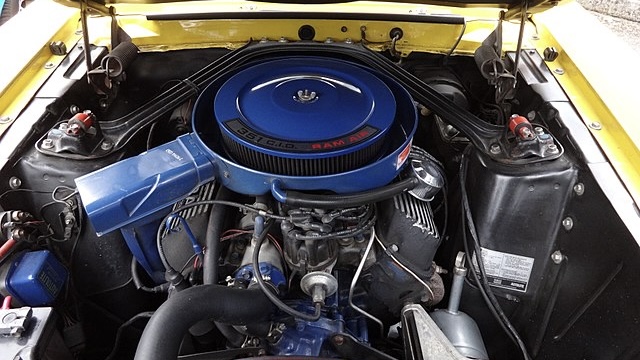
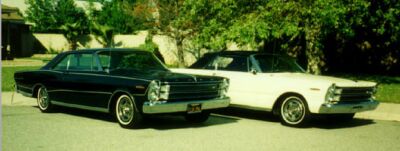
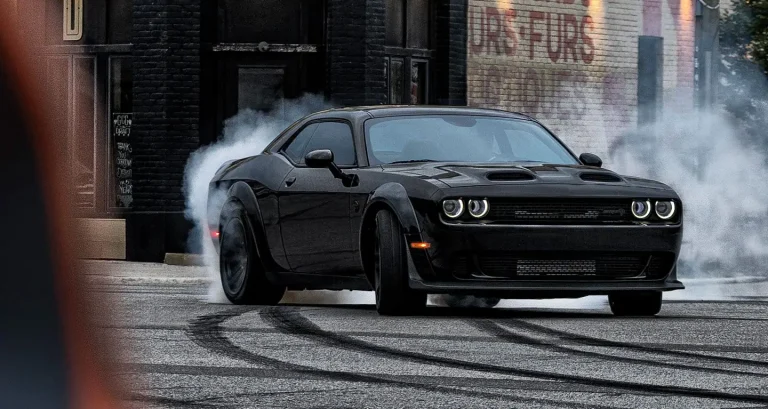
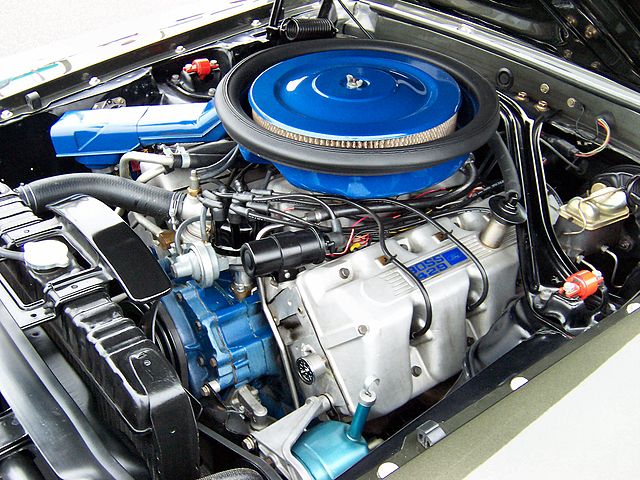
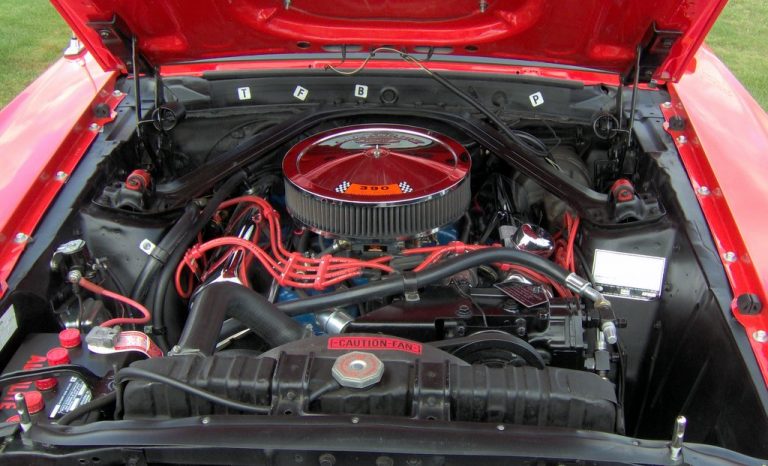
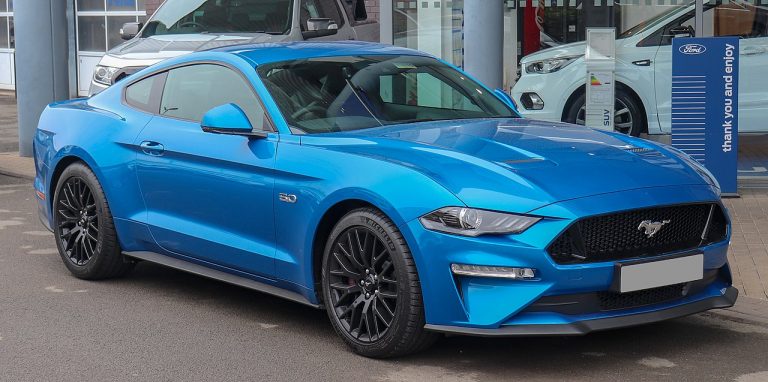
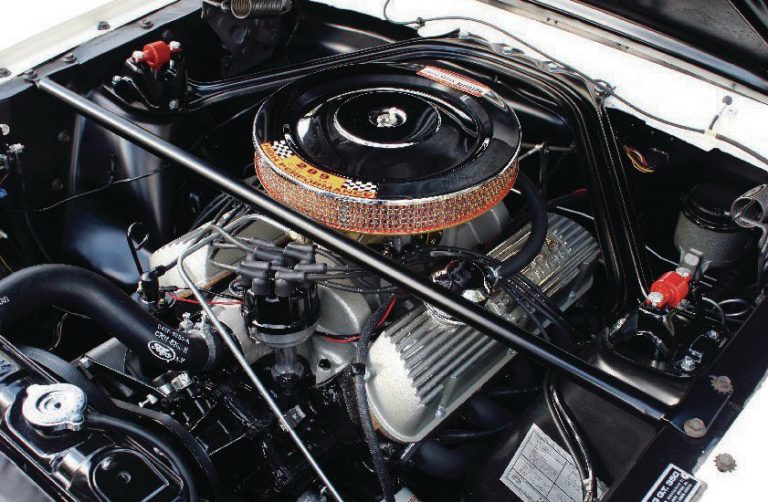
Your 351W article is very extensive! Unfortunately one small part is entirely false:
“Outside of the gaskets degrading and failing over time, the 351 Windsor’s timing cover itself is also a problem. Since the 351’s timing cover acts as the water pump backing, over time, the coolant can erode through the timing cover itself, also creating a leak.”
Please remove that portion after you research and verify.
Also, while issues (e.g., gasket age) affect the 351W, they are common across all engines, and no worse in the 351W. Generic and not being specific to the 351W are redundant filler to read through. Meanwhile, ancestry from the early engines up-through 302 is described, with no mention of much stronger main caps or other specific benefits. Please keep info specific to the 351W. Thanks!